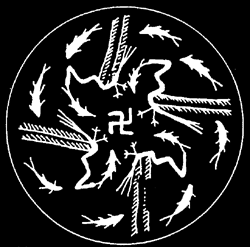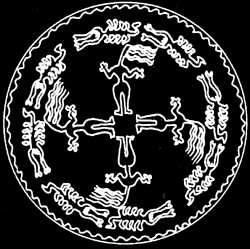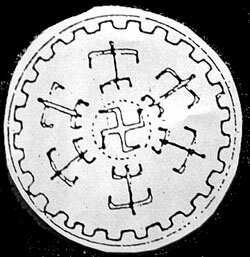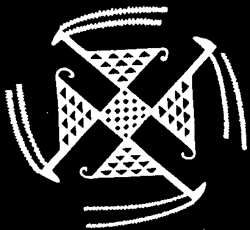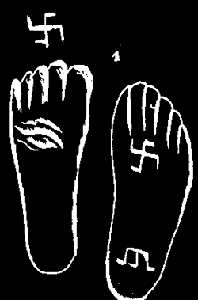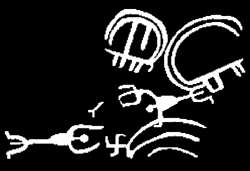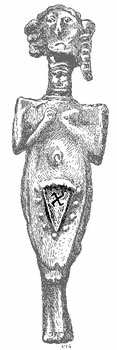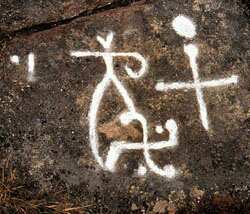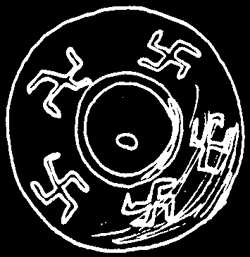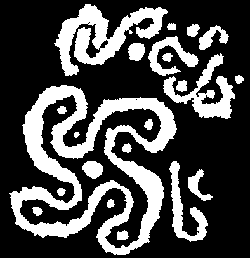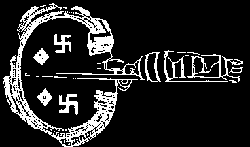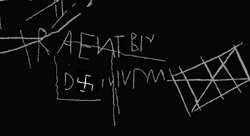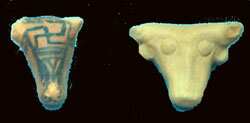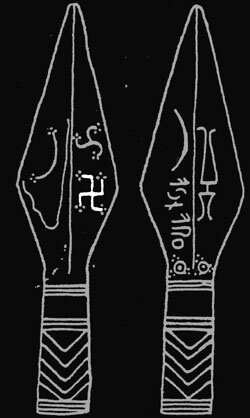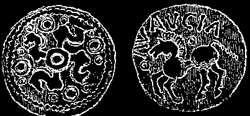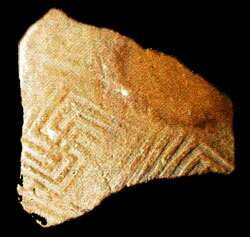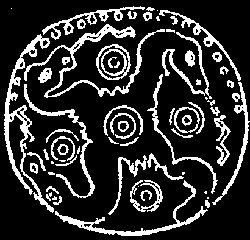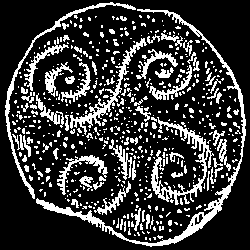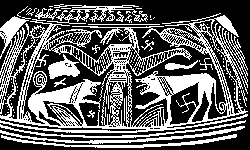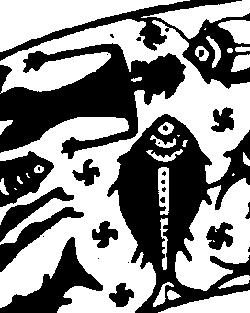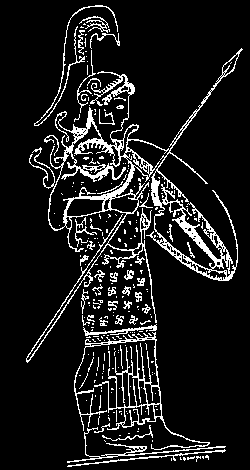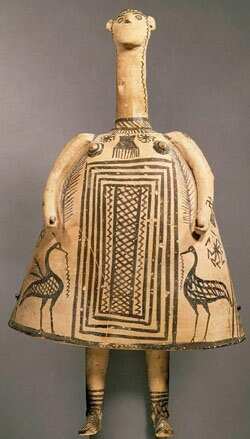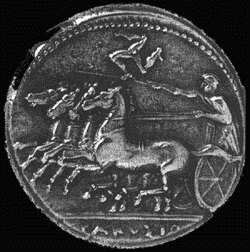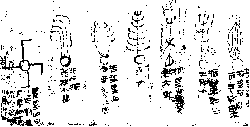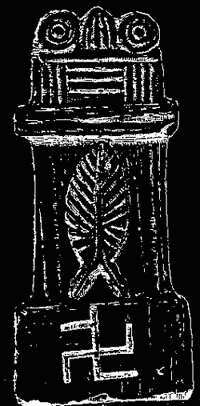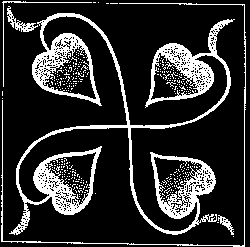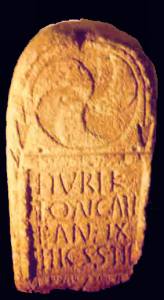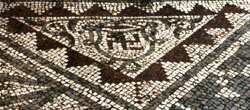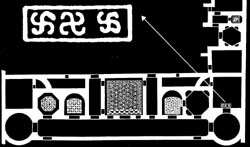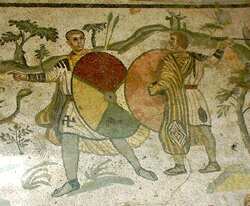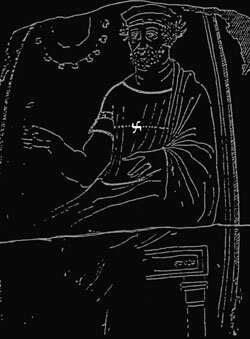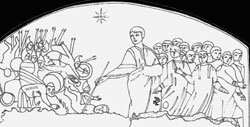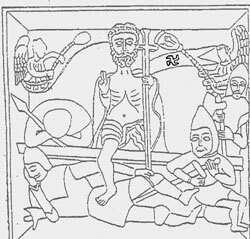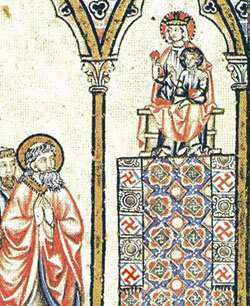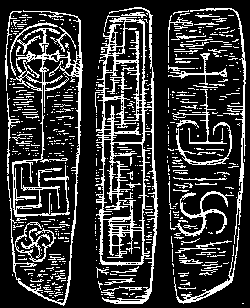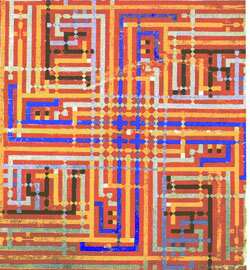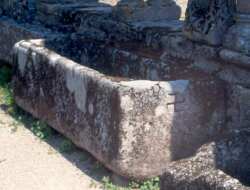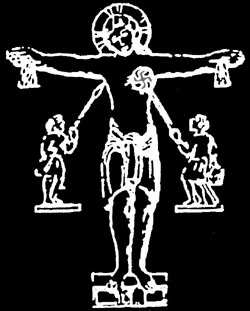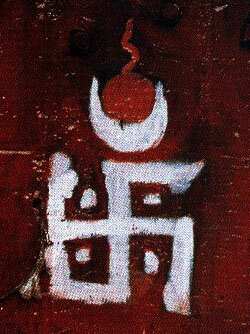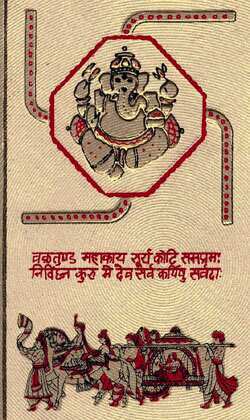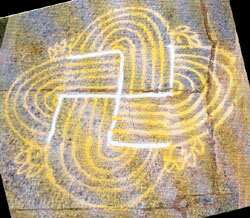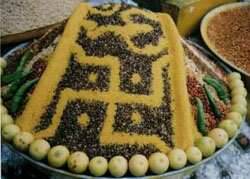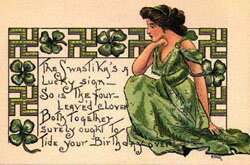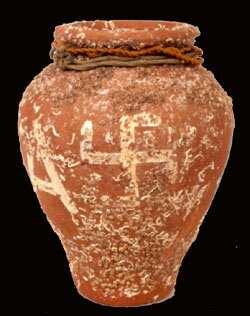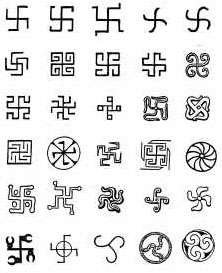 Fig. 1 – Several types of swastika / Different periods
|

Fig.
2 – Swastika from Bylany |
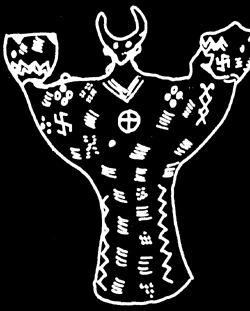 Fig. 3 – Idol with horns, central Mediterranean / Neolithic |
|
Fig.
4 – Pottery from Samarra |
|
Fig.
6 – Pottery, Europe / Neolithic. |
|
Fig. 7 – Four goats composing a Swastika, Samarra / V millennium. |
|
Fig.
9 – Rock Art from Gegham, |
|
Fig.
10 – Lead Idol from Hissarlik |
Fig. 11 - Rock Art : Portela da Laxe, Galicia (Spain) / II- I millennium. |
Fig.
12 – Spinning-whorls from Hissarlik |
|
__________________________________________________________________________________ 2. Protohistory
|
||
|
|
Fig.
14 – Fibula from Parreitas, |
Fig. 15 – Inscription with a swastika, Sertã, (P) / Late Iron Age. |
|
Fig. 16 – Bull’s head with swastika, Numancia (Spain) / Late Iron Age. |
Fig.
17 – Spear with swastika, Brandenburg (D) / Late Iron Age. |
Fig. 18 – Coin with four horses forming a swastika (Gaul) / I century BC. |
|
Fig. 19 – Pottery from Segovia’s Hillfort, Elvas (P) / Late Iron Age. |
|
|
|
|
Fig. 22 – Triskel from Briteiro’s Hillfort, Guimarães (P) / 1st Century BC.
|
|
|
______________________________________________________________________________ 3. Greece
|
||
|
Fig.
23 – Minoan writing, |
Fig.
24 – Bee Goddess and swastika, (Beotia) / |
Fig. 25 – Shipwreck, Greek pottery, Ischia Museum / VIII century BC |
|
Fig. 26 – Atena with swastikas, Androklidés (Greece) |
Fig. 27 – "Bell-idol", west Mediterranean / VIII century BC
|
Fig.
28 – Coin with triskel, Sicily, |
|
___________________________ 4. China
|
||
|
Fig. 29 – Comet’s
atlas (China) _____________________________________________________________________________________ |
||
|
5. Roma
|
||
|
|
|
Fig. 32 – Roman mosaic, Conimbriga (P) |
|
Fig. 33 – Swastika on the Good
Shepherd &
|
|
|

Fig. 36 – Swastika on gladiator’s shield, Colchester Museum (U.K.) |
|
Fig. 38 – Meander of swastikas and bay leaves, Conimbriga (P) / II- III century AD |
|
F ig. 39 - Swastika over cantharus, |
Fig. 40 – Governor’s palace, Aquincum (Hungary) |
|
|
Fig. 42 – Swastika on priest’s
chest, |
Fig. 43 – Moses crossing the Red Sea, |
Fig. 44 – Funerary inscription, Catacombs, Roma (I) / IV- V century |
|
__________________________________________________________________________________
|
||
|
Fig.
45 – Christ leaving his tomb, |
Fig.
46 – Our Lady & swastikas, |
Fig.
47 – Funerary gravestone ( Ireland) |
|
Fig. 48 – "The name of Allah", blue swastika (Turkey) / XV century |
Fig. 49 – Swastika on sarcophagus, Guimarães (P) / X century |
Fig.50
– Swastika on Christ’s heart, Narbonne (F) / XIV
century (?) |
|
7 _______________________ 7. Present times
|
||
|
|
Fig.
52 – Wedding invitation (India) |
Fig. 53 – Drawing on Shiva’s temple, (India) |
|
|
Fig.
55 – Happy Birthday Card, (USA) |
Fig.
56 – Pottery vessel for fishing octopuses (P) |
